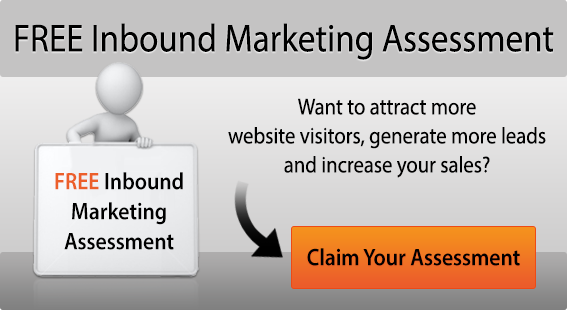How To Scale Up Your SEO As Your Company Grows
by Leanne Mordue on 14-Sep-2022 14:08:00

Search engine optimisation (SEO) is a crucial strategy for attracting the website visitors you need to grow your business online, but as your company grows and your needs change, do you also need to change the way you do SEO?
The answer to this is partially yes and partially no. The core SEO tactics you’ve already established will continue to serve you during your growth phase, but you will need to scale up your SEO output if you want to sustain high visibility for the right keywords. You may also want to automate some of your sales and marketing procedures if you find you are getting too many leads to respond to and nurture in a timely manner. Let’s look at each of these points in further detail:
Reviewing your rankings
Scaling your SEO starts with comprehensively reviewing your starting point, in terms of where you rank for certain keywords, web traffic volumes, and conversions, and where these figures stand in relation to where you would like to be. Start with your core keywords and see how well these have been optimised over the previous 6 to 12 months – this will help you forecast growth and web traffic over the coming period. Also assess how well your content ranks for non-branded keywords, supporting keywords, longtail question-based keywords, and keywords in related areas (even if you are not specifically targeting these phrases).
Updating your buyer personas
At some point in your growth, your business will move – almost imperceptibly at first – from the ‘S’ in SME over to the ‘M’, and this has important implications for the type of buyers you are likely to attract, as well as every other aspect of your business. With higher overheads may come the necessity to charge higher costs, and with greater experience and industry authority, you may now be targeting a more premium or specialised market with your services. Take some time to review your buyer personas regularly during a growth stage to ensure they genuinely reflect the type of buyer your business will appeal to. You may find, for instance, that some of your earlier personas may no longer afford your services, or may not want to work with you if they have a preference for smaller businesses, and so on. You may also find a successful market in personas that were previously out of reach, due to your increased experience and capacity.
Updating your keyword research
If you’ve updated your buyer persona portfolio or added new ones, you’ll need to update your keyword research to ensure optimum visibility for your target buyers and their changed circumstances. This is a useful exercise in any case, to keep up with changing economic circumstances and trends, but is especially critical during a growth phase, as failing to stay relevant in the keywords you target could stall your growth by reducing your Google visibility for important search terms.
Aligning your keywords with the stages of the buyer journey
Keyword optimisation gives you better search visibility on Google but doesn’t necessarily build better connections with your target buyers. Part of updating your SEO strategy involves reassessing how well your keywords align with the different stages of the buyer journey addressed in your content – something which is especially important if your keywords have changed.
Updating your content output
Google search rankings are being continually updated, so to remain relevant you need to sustain your content output at a high level. While as a smaller business it may have been possible to obtain high visibility for niche longtail keywords with only a moderate content output – say, 2 blog posts per month – larger businesses generally need to create a higher output of content to remain competitive, and to expand their scope to include more highly contested keywords. As you grow, you will need to up your output accordingly, so be prepared to invest in four, eight, or 12 blog articles a month (and the associated promotions) for your web traffic to keep growing in step with your business.
Create more content for earlier buyer stages
Scaling your SEO will deliver more traffic to your website, and proportionally, most of these people will be in the early buying stages – awareness and consideration. Your content strategy should reflect this by providing more content for these earlier stages than when you had a smaller volume of web traffic. While as a smaller business with modest goals your content may have been geared more towards the decision stage, it should now be more like a 70/30 split in favour of consideration and awareness. Equip all of this content with clear CTAs that drive your leads towards higher decision stage content, and make your decision level content count in terms of how it sells your product and service through your core value propositions.
Improve your website architecture
There is no point in encouraging more visitors to your site if your website itself is not optimised for high traffic. There are two elements of this when it comes to SEO: the ‘shop front’ content that your visitors see, and the underlying code that is scanned and assessed by the Google bots when determining rank. As much as sales are made by humans and not search algorithms, start with the code, as this is what gets you noticed on the SERPs. Update your XML site map so that it accurately describes your website – including all your landing pages and blog posts – as this is the first port of call for the Google bots when assessing your site architecture. An inaccurate or faulty XML site map could damage your rankings by several places.
A full technical SEO site audit is also beneficial at this stage, as this will highlight areas for on page optimisation you may not have considered and give you an action plan for improving the technical quality of your site. On the customer facing side, pay attention to the usual suspects that may impact customer experience, such as site loading speed, page navigation and layout, and ensure that your design complements your content and makes it more accessible.
Implement marketing automation
If you are successful at SEO, you will be getting plenty of leads through your website. The best strategy for managing large volumes of leads is to implement a good marketing automation platform, such as HubSpot. This will auto import new website leads into your CRM and ensure that no precious sales leads are missed, and also makes it easier for your team to respond to prospects promptly, and to manage your email lead nurturing programme.
Ready for growth? Contact JDR today
If you are ready to take your SEO to the next level and grow your website traffic and online sales, contact one of our inbound marketing specialists today. We can help you scale your digital marketing in a way that reflects your organisational objectives and take full advantage of every sales lead that comes through your site.
Image source: Unsplash
- Inbound Marketing (SEO, PPC, Social Media, Video) (827)
- Strategy (366)
- Sales & CRM (195)
- Marketing Automation & Email Marketing (190)
- Business Growth (165)
- Website Design (160)
- Hubspot (138)
- Lead Generation (116)
- Google Adwords (99)
- Content Marketing (94)
- Conversion (51)
- Case Studies (47)
- News (47)
- Ecommerce (39)
- Webinars (34)
- SEO (25)
- AI (20)
- Events (19)
- LinkedIn Advertising (17)
- Video (17)
- Video Selling (15)
- Software training (13)
- Niche business marketing (11)
- The Digital Prosperity Podcast (10)
- Facebook Advertising (6)
- HubSpot Case Studies (5)
- January 2026 (1)
- December 2025 (15)
- November 2025 (6)
- October 2025 (17)
- September 2025 (16)
- August 2025 (14)
- July 2025 (14)
- June 2025 (5)
- May 2025 (19)
- April 2025 (15)
- March 2025 (13)
- February 2025 (13)
- January 2025 (8)
- December 2024 (2)
- November 2024 (4)
- October 2024 (21)
- September 2024 (4)
- August 2024 (8)
- July 2024 (14)
- June 2024 (16)
- May 2024 (25)
- April 2024 (15)
- March 2024 (18)
- February 2024 (5)
- January 2024 (10)
- December 2023 (6)
- November 2023 (10)
- October 2023 (13)
- September 2023 (12)
- August 2023 (14)
- July 2023 (13)
- June 2023 (14)
- May 2023 (15)
- April 2023 (13)
- March 2023 (14)
- February 2023 (13)
- January 2023 (15)
- December 2022 (13)
- November 2022 (6)
- October 2022 (8)
- September 2022 (22)
- August 2022 (15)
- July 2022 (13)
- June 2022 (16)
- May 2022 (14)
- April 2022 (16)
- March 2022 (17)
- February 2022 (11)
- January 2022 (8)
- December 2021 (6)
- November 2021 (7)
- October 2021 (11)
- September 2021 (10)
- August 2021 (7)
- July 2021 (7)
- June 2021 (4)
- May 2021 (4)
- April 2021 (1)
- March 2021 (3)
- February 2021 (5)
- January 2021 (4)
- December 2020 (7)
- November 2020 (6)
- October 2020 (5)
- September 2020 (9)
- August 2020 (18)
- July 2020 (17)
- June 2020 (17)
- May 2020 (10)
- April 2020 (21)
- March 2020 (24)
- February 2020 (21)
- January 2020 (12)
- December 2019 (23)
- November 2019 (12)
- October 2019 (14)
- September 2019 (16)
- August 2019 (15)
- July 2019 (13)
- June 2019 (6)
- May 2019 (8)
- April 2019 (4)
- March 2019 (2)
- February 2019 (2)
- January 2019 (2)
- December 2018 (3)
- November 2018 (24)
- September 2018 (11)
- August 2018 (9)
- June 2018 (3)
- May 2018 (6)
- April 2018 (14)
- March 2018 (12)
- February 2018 (16)
- January 2018 (15)
- December 2017 (15)
- November 2017 (18)
- October 2017 (23)
- September 2017 (19)
- August 2017 (28)
- July 2017 (27)
- June 2017 (25)
- May 2017 (18)
- April 2017 (17)
- March 2017 (16)
- February 2017 (17)
- January 2017 (14)
- December 2016 (21)
- November 2016 (27)
- October 2016 (25)
- September 2016 (16)
- August 2016 (20)
- July 2016 (19)
- June 2016 (14)
- May 2016 (20)
- April 2016 (24)
- March 2016 (22)
- February 2016 (28)
- January 2016 (27)
- December 2015 (28)
- November 2015 (19)
- October 2015 (9)
- September 2015 (12)
- August 2015 (5)
- July 2015 (1)
- June 2015 (10)
- May 2015 (3)
- April 2015 (11)
- March 2015 (14)
- February 2015 (15)
- January 2015 (12)
- December 2014 (2)
- November 2014 (23)
- October 2014 (2)
- September 2014 (2)
- August 2014 (2)
- July 2014 (2)
- June 2014 (7)
- May 2014 (14)
- April 2014 (14)
- March 2014 (7)
- February 2014 (2)
- January 2014 (7)
- December 2013 (9)
- November 2013 (14)
- October 2013 (17)
- September 2013 (3)
- August 2013 (6)
- July 2013 (8)
- June 2013 (4)
- May 2013 (3)
- April 2013 (6)
- March 2013 (6)
- February 2013 (7)
- January 2013 (5)
- December 2012 (3)
- November 2012 (2)
- September 2012 (1)
Subscribe by email
You May Also Like
These Related Blogs

Video: 3 Ways JDR Group Can Help You Grow Your Business

How SEO Has Changed Since 2007
When researching one of our latest articles we came across a blog post proclaiming the death of SEO that was more than a decade old. Contrary to these …

Search Engine Optimisation: The Cure For Your Poor Performing Website
Search Engine Optimisation (SEO) is the process of taking your website and making changes to it that will help make it a perfect candidate for particu …




